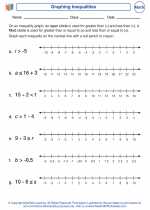Parentheses in Math
In mathematics, parentheses are used to indicate the order of operations in an expression. They are also used to group numbers, variables, and operations together. Understanding how to use parentheses correctly is crucial in solving mathematical problems and equations.
Order of Operations
When solving mathematical expressions, it's important to follow the order of operations, which is a set of rules that define the sequence in which different mathematical operations are performed. The order of operations is as follows:
- Perform operations inside parentheses
- Calculate exponents and roots
- Multiply and divide from left to right
- Add and subtract from left to right
Examples
Let's look at some examples to understand how parentheses are used in mathematical expressions:
Example 1: \(3 \times (4 + 2)\)
First, we need to perform the operation inside the parentheses. \(4 + 2 = 6\) Then, we multiply 3 by 6. \(3 \times 6 = 18\) So, the result is 18.
Example 2: \((5 - 3) \times (8 + 2)\)
First, we perform the operations inside each set of parentheses. \(5 - 3 = 2\) \(8 + 2 = 10\) Then, we multiply 2 by 10. \(2 \times 10 = 20\) So, the result is 20.
Study Guide
To effectively use parentheses in mathematical expressions, it's important to remember the following key points:
- Always perform operations inside parentheses first.
- Remember the order of operations: parentheses, exponents, multiplication and division, addition and subtraction.
- Be careful when dealing with multiple sets of parentheses within an expression.
Practicing various mathematical expressions involving parentheses will help reinforce your understanding of this concept.
By mastering the use of parentheses in mathematical expressions, you'll be able to solve complex problems with confidence and accuracy.
.◂Math Worksheets and Study Guides Seventh Grade. Equations and Inequalities
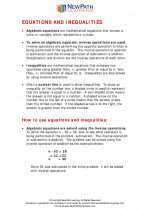
 Worksheet/Answer key
Worksheet/Answer key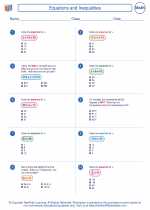
 Worksheet/Answer key
Worksheet/Answer key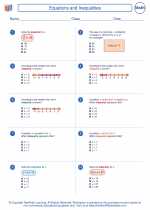
 Worksheet/Answer key
Worksheet/Answer key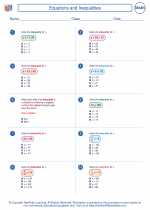
 Worksheet/Answer key
Worksheet/Answer key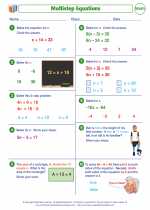
 Worksheet/Answer key
Worksheet/Answer key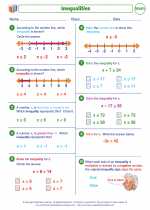
 Worksheet/Answer key
Worksheet/Answer key